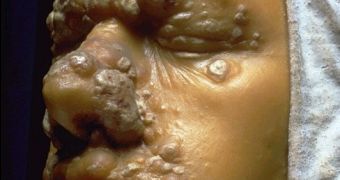This was the disease of the unhealthy morality, the AIDS of the past centuries. Syphilis killed millions of people in Europe, and didn't stop when the antibiotics were discovered. A new DNA investigation on Treponema, the bacterium causing the disease, published in the Public Library of Science Neglected Tropical Diseases, strengthens the idea that the disease was brought to the Old World by Christopher Columbus during his voyages.
But if you had thought that his unwittingly abstinent sailors got this through hanky-panky with the Natives, you're wrong: the disease turned sexual in European ambiance!
"It evolved this whole new transmission mode, and it didn't take very many genetic changes. What this tells us is that new transmission modes may evolve pretty rapidly. This is important to us today, because we're worried about things like avian influenza going from human to human," said lead author Kristin Harper, a graduate student at Emory University.
Even if the syphilis is treatable with antibiotics nowadays, the germ obstinates in remaining with us, and low classes and gay communities are still highly vulnerable to it.
"There's the long-running controversy over how syphilis found its way to Europe, where it spread havoc for centuries. One theory holds that the disease was already in Europe before the explorer Columbus returned, but people didn't diagnose it correctly," said Harper.
Many insist that the frisky Spaniards brought the disease together with tobacco during the voyages of Columbus, and historical sources point out that 1495 could be the year when the disease made its debut in Europe through a pandemic, three years after the discovery of the New World.
The research team investigated 21 strains of Treponema coming from 26 regions of the planet. Treponema is responsible not only for syphilis, but also for a tropical disease called yaws, causing infection and ulcerations of the joints, bones and skin. DNA analysis has shown the syphilis strains were the most recently and closest to South American yaws strains.
"But in a twist, the study results also suggested that yaws first appeared not in the New World but in the Old World. In essence, the theory goes something like this: Yaws appeared in Africa and eventually made its way to South America and the New World as humans migrated. Then the germs made their way to Europe with the help of sailors and may have evolved into the venereal disease known as syphilis, perhaps because of different environmental conditions," said Harper.
"It's especially neat when I think about contacts between Europeans and Native Americans. As far as diseases go, it seemed like a one-way street: Europeans brought measles and smallpox (to the Indians). But this is an example of disease going the other way. That seems kind of fair," she added.
"It confirms everything we've done. When you've got two sets of totally different diagnostic techniques that come up with the same answer, that really increases the power of the technique," said Dr. Bruce Rothschild, professor of medicine at the Northeastern Ohio Universities College of Medicine, an investigator of the evolution of syphilis based on skeletal remains.
While yaws is a highly lethal, disfiguring disease, syphilis is more subtle, but the lack of obvious immediate symptoms boosts its spreads, and the disease still kills, causing dementia before death. Historical figures believed to have suffered of syphilis are Ivan the Terrible, Friedrich Nietzsche, Pope Alexander VI, Benito Mussolini and Adolf Hitler.

 14 DAY TRIAL //
14 DAY TRIAL //